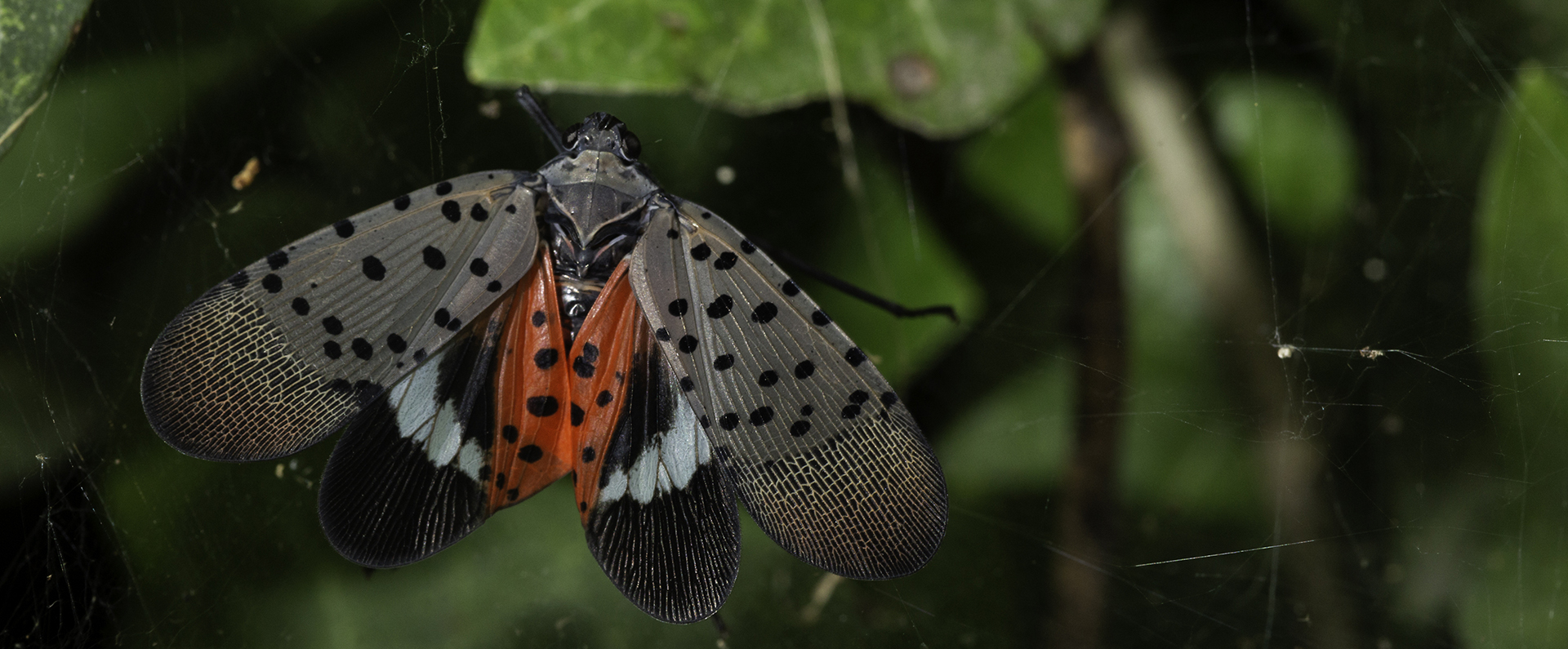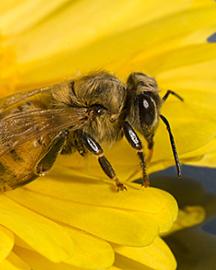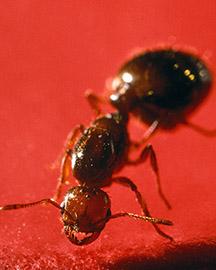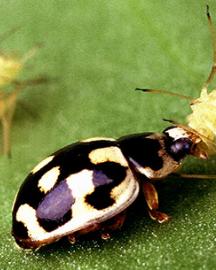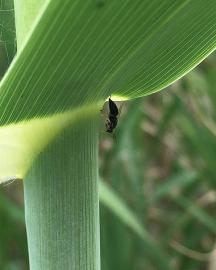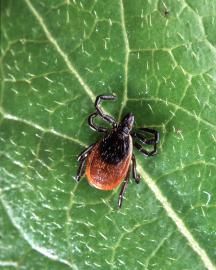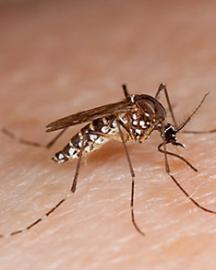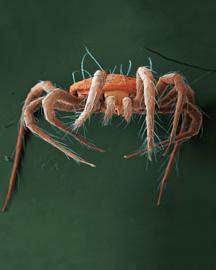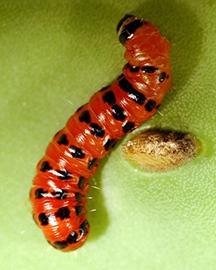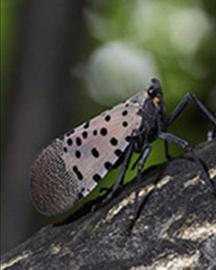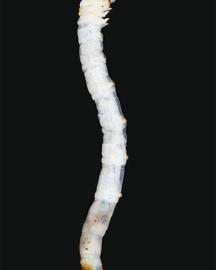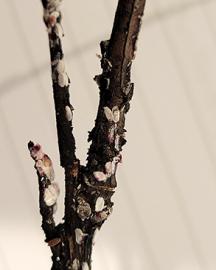ARS scientists use cryopreservation techniques to protect the monarch butterfly from extinction.
"Bugs and Pests"
Do you like insects? Do you get “buggy” at the sight of a Japanese beetle? Are you curious about an insect you found in your back yard? Well, you’ve come to the right place, because in this section, we’re all about bugs.
You may think all bugs are “pesky pests,” but some are actually beneficial. Take the waterfern beetle, which eats destructive weeds and other pests. Some insects, like the spotted lanternfly (see above), are beautiful but highly destructive to crops.
Here at ARS, we have teams of scientists and researchers specializing in entomology (insects). They use scientific information and tools to detect, control, and eradicate insects that negatively impact crops, animals, and humans. In fact, we even use insects to attack other insects, a method called biocontrol.
Be sure to stop by often to learn about our insect research – we promise not to bite or sting.
ARS scientists find that seed meal from plants in the mustard family can kill mosquito larvae before they hatch.
Scientists at ARS are exploring solutions to help boost bees’ defenses and keep them buzzing.
Did you know that fire ants are a menace to humans, animals, and agriculture? At ARS, we're working to stamp out fire ants!
ARS researchers are helping farmers use beneficial insects to protect their crops.
ARS researchers have collected and identified 50 lady beetles that are beneficial, serving as champions of Hawaiian biological pest control.
Researchers develop novel way to prevent the spread of plant disease.
The invasive Arundo plant threatens local water supplies. See how ARS scientists are identifying insects that are naturally equipped to fight this problem.
We all know that insects surround us, but what about the ones that get closer to home – inside our homes?
At ARS, researchers are working on new approaches to limit ticks’ ability to spread.
ARS scientists are inventing new tools to investigate blood-sucking insects.
These parasitic wasps lay eggs inside the developing fly larva and consume them from the inside.
ARS scientists are constantly discovering and describing new species of insects like the ostrich moth.
A tiny parasitic wasp known as the samurai wasp, may be the solution to the major economic damage to crops perpetrated by the stink bug.
Learn how ARS scientists are working hard to fight this pest and protect our beloved ash trees.
This mite is used by farmers to attack and feast on bugs that destroy strawberries and other crops inside greenhouses and fields.
These caterpillars started as a “friend” but the species became an invasive “pest” when it was discovered in Florida.
ARS researchers have been hot on the trail of the destructive spotted lanternfly.
This moth is native to Southeast Asia and its caterpillar feeds on the tissues inside stems of plants in the myrtle family.
This insect is native to East Asia and feeds on the sap of the vividly colorful crapemyrtle trees, as well as apple and blackberry plants.



